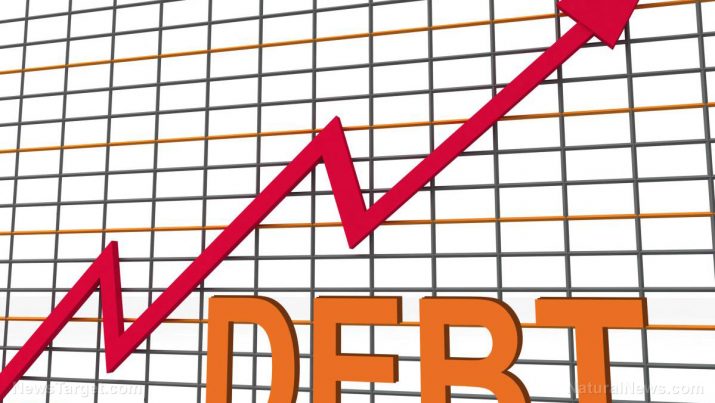
Charles Hugh Smith explains the “supernova model of financial collapse” that’s now imminent across our debt-infested world
Wednesday, June 21, 2017 by JD Heyes
http://www.risk.news/2017-06-21-charles-hugh-smith-explains-the-supernova-model-of-financial-collapse-thats-now-imminent-across-our-debt-infested-world.html

Once upon a time governments actually had to be fiscally responsible, spending no more than they took in. Expenditures had to match revenues, in other words; when the money ran out, that was all there was.
But somewhere along the line — some say it all changed at the Bretton Woods summit that occurred towards the end of World War II, when two global financial institutions, the International Monetary Fund, and the World Bank, were created by the rich nations — the accumulation of massive debt became no big deal.
In fact, many say that debt is now just a fact of life, and why wouldn’t they, considering that a number of rich nations — including the United States — are so far in debt there is no way to ever get out of it.
However, debt is not something to be taken lightly; debt has crushed governments since there were governments to crush, and debt still crushes today. Countries like Japan (252 percent debt-to-GDP ratio), Greece (which has teetered on national bankruptcy for years) and others are flat broke, and their situations are only getting worse. Debt will crush them eventually since today’s currencies are based not on hard assets but rather on the strength (or weakness) of global promises.
None of this is lost on Charles Hugh Smith, who has studied and written about fiscal relationships of debt-asset ratios and other economic factors. In a recent blog post, he noted that expanding debt bubbles are far expanding above real wealth and real earnings, making their collapse “inevitable.”
Smith calls this the “Supernova Model of Financial Collapse,” which he bases on the analogy of a supernova. According to one definition, he quotes: “A supernova is an astronomical event that occurs during the last stellar evolutionary stages of a massive star’s life, whose dramatic and catastrophic destruction is marked by one final titanic explosion.”
That, he says, is what many governments with massive (and building) debt now face.
“The financial analogy is easy to see: When rapidly expanding debt consumes a critical threshold of earnings (fuel), the equivalent of gravity (default, inability to service the enormous debt) triggers the collapse of the entire debt/leverage dependent financial system,” he writes.
That’s a great point. Consider just the debt situation of the United States, which ranks about in the middle of the top 20 most indebted nations: One of the reasons why the Federal Reserve has kept interest rates so low is because raising them would have a dramatic impact on U.S. debt payments.
According to the Peter G. Peterson Foundation, in a December paper, the Fed’s recent small increases in the federal funds interest rate signals that it believes the U.S. economy is strengthening. But raising rates could have a deleterious effect on the nation’s economic health: Rising rates mean consumer loans (for cars, houses, appliances, etc.) are more expensive. But so are government costs:
Interest rates on government securities will also rise — meaning that the federal government will have increased borrowing costs, which will have significant consequences for our national debt.
Specifically, according to current Congressional Budget Office projections, net interest costs are expected to more than double over the next decade, climbing from $270 billion to an eye-popping $712 billion by 2026; over the period, interest alone will cost the government (and taxpayers) an astounding $4.8 trillion. (RELATED: Study: Yeah, Americans are OK with lower taxes AND less govt. spending)
As substantial as that is, it gets worse: If the government continues to run budget deficits, which it is expected to do because Congress refuses to adopt reform measures that would allow them to substantially cut federal spending, that also means interest payments will continue to climb. The higher the debt, the more money that is borrowed, and the higher the debt payments. Imagine what the country could do with an extra $700 billion in the federal budget that didn’t go to interest payments.
As you can see, and as Smith goes on to point out, this is a cycle with only one logical conclusion: Fiscal supernova.
J.D. Heyes is a senior writer for NaturalNews.com and NewsTarget.com, as well as editor of The National Sentinel.
Sources:
Tagged Under: Tags: Collapse, death spiral, deficit spending, fiscal insanity, national debt, supernova




